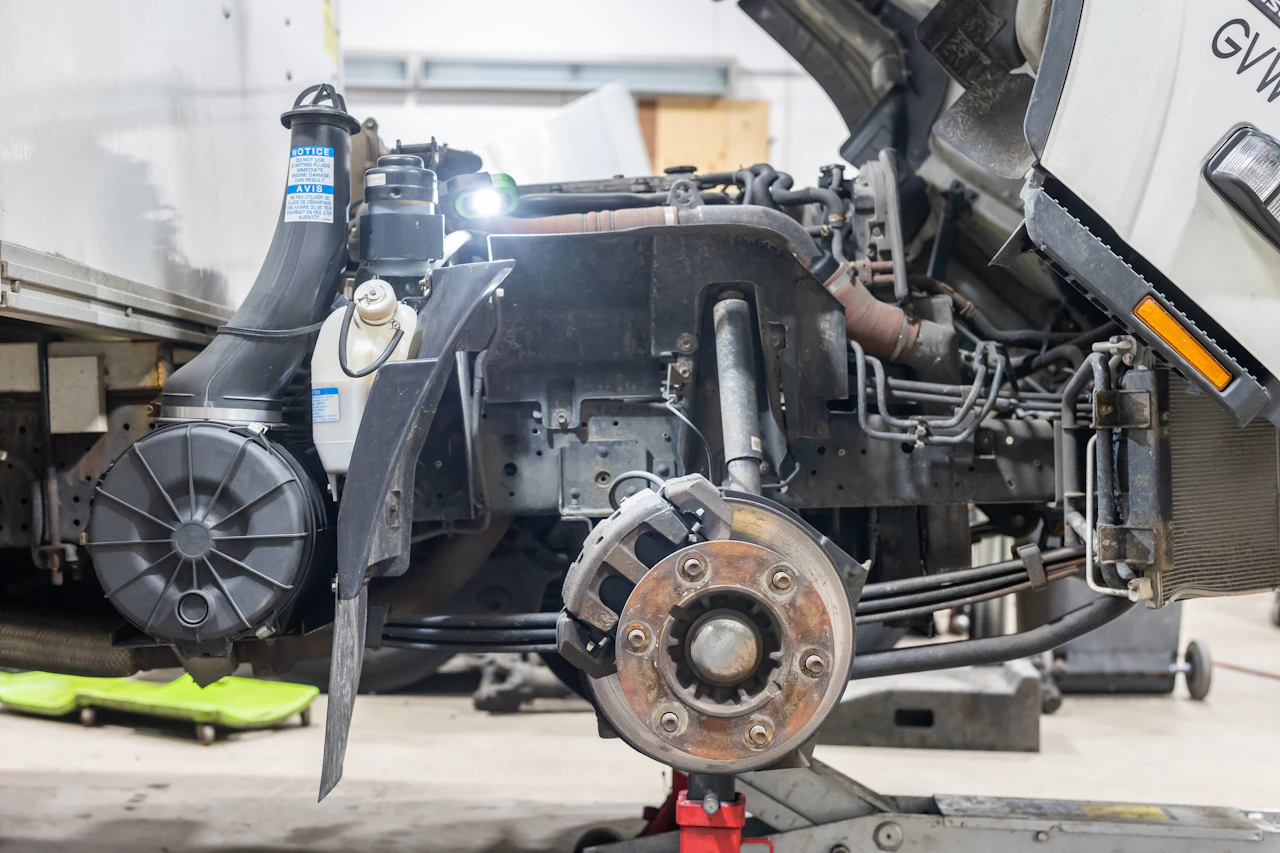Even for the most seasoned drivers, the winter months may be dangerous to be on the roads. You're more likely to have a trouble-free season if you take preventative measures to prepare your vehicle before the winter weather arrives. We spoke with seasoned truck drivers and fleet managers to get their top winter driving advice for heavy-duty trucks and commercial trucks to help you be ready to remain safe this winter:
Pre-trip Inspections
A little time spent inspecting your truck's condition before journeys and during rest breaks may have a significant impact. Snow and ice should be removed from your truck's windows, lights, hood, roof, wheel wells and trailer. Any of these regions with snow increases the likelihood that driving may be compromised and vision may be impaired.
Examine the tires, wiper blades, fluid, and lights visually and physically. During the winter, always have at least a half a tank of fuel in your truck.
Keep a winter driving kit with you
You need to have a winter driving kit with you as you continue to drive the truck on the road. Keep the following items in your winter driving kit:
- Appropriate attire (loose layers, extra gloves, rain gear)
- Batteries and a flashlight
- A blanket
- Water and non-perishable foods
- A first aid kit, as well as any necessary prescription drugs
- Salt or a sandbag
- Extra washer fluid
- A brush and windshield scraper for removing snow
- Booster cables
- Traction mats or tire chains
- Charged mobile device
Use extra caution when driving
Increase your following distance, slow down, and make all adjustments carefully to make up for poor traction. If something unexpected happens on the road ahead, you will have more time to respond at a slower pace. This time of year, having extra patience and being mindful of other drivers may go a long way.
Slowly decelerate and accelerate
In ice or wet conditions, try to avoid abrupt stops and starts. In slick road conditions, if you need to slow down rapidly, consider softly pumping your brakes with only the ball of your foot while keeping your heel on the ground. This lessens the possibility of your tires locking up and you losing control of your truck.
Allow enough room for you in front of and behind
Increase the space between your truck and other trucks and steer clear of driving in groups to allow yourself adequate room to escape danger in an immediate emergency. At 0°F, the needed stopping distance on ice is double what it is at 32°F. When driving in icy, slippery conditions, normal following distances should be extended to 8–10 seconds.
Avoid crashes and traffic dangers by taking evasive action
You may have to move evasively if you want to escape a collision. Gentle deceleration and steering are preferable to braking alone at speeds above 25 mph since maneuvering around an object require less space than braking to a halt. Sudden braking might result in a loss of control in slippery road conditions. Your increased space between other trucks and vehicles on the road should allow you more time to observe and avoid obstructions and other road dangers.
Hold the steering wheel firmly and in control
You risk losing control of your truck very fast if you make sudden, abrupt moves. Through ruts on the road, in severe winds, and on ice, hold onto the steering wheel firmly and with a strong arm. Driving on snowy or icy terrain is challenging and requires smooth, cautious, and accurate steering wheel motions. Your truck may slide if you make abrupt steering wheel adjustments or accelerate too quickly over potholes. Beware of your trailer pushing you as you make twists and curves.
Keep an eye out for black ice
When the temperature is just below freezing, a thin coating of translucent ice known as "black ice" develops. Black ice may be potentially deceiving because it often makes the road surface seem somewhat damp, like a pool of water. Locations likely to see the onset of ice formation or be the slickest are shaded areas, bridges, overpasses, and junctions.
When it's almost freezing (below 40°F), hazardous ice road conditions may appear suddenly, so be alert for these warning signs:
- The top corners of your windshield, antenna, outside mirror arms, and outside mirror backs develop ice over time.
- An ice patch is indicated when the water spray from the tires of the trucks in front of you abruptly ceases.
- Even if the road surface merely seems damp, trees and signs next to the road are frosty with ice.
Drive with additional caution while in a mountainous area
Winter weather in the mountains may be harsh and unpredictable. Be prepared for wind gusts and alert to emergency trucks and snowplows in exposed areas. Keep an eye out for melting or hard-packed snow and strong side gusts, which may result in losing control. Avoid stopping in avalanche zones if possible, and always follow road signage. For certain roads, snow tires or tire chains may be necessary. Local signs should clarify this, and most states have a transportation radio station you may listen to for updates on the traffic and road conditions in the vicinity of your travel.
If you do slide:
- Fasten the clutch; Pay attention to the left mirror.
- To get back in front of the trailer, steer and counter-steer as quickly and steadily as possible until you recover control.
Final words
Now you know how to prepare for winter. Keep these tips in mind; you can ensure a safe and hassle-free driving experience.

